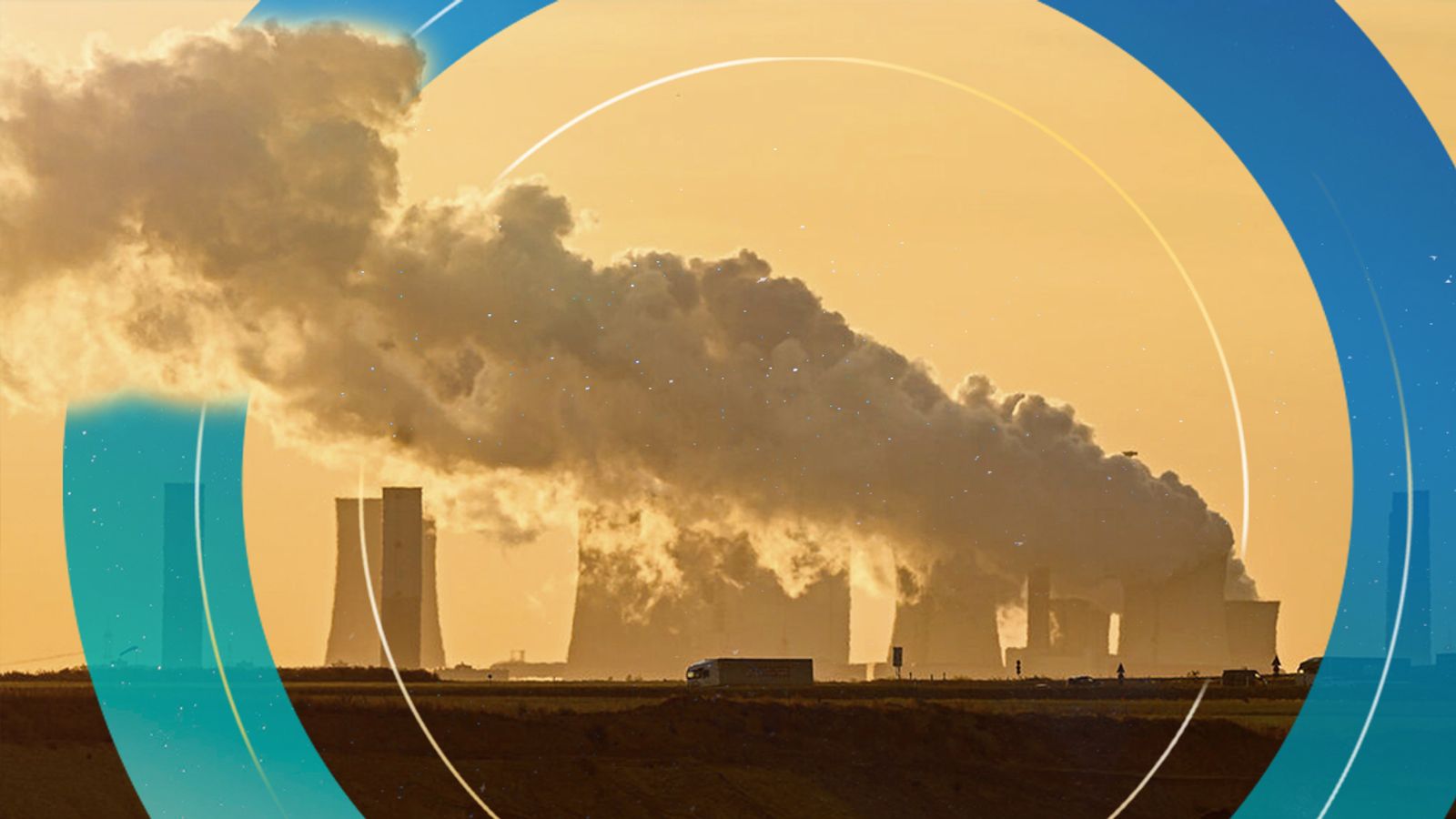Global carbon pollution is expected to return to almost pre-pandemic levels, scientists have warned as world leaders continue to meet for climate talks.
Carbon emissions from fossil fuels fell 5.4% in 2020 from a record high the previous year due to widespread COVID-19 lockdowns.
But researchers carrying out the annual Global Carbon Budget analysis say they are expected to rise by 4.9% to 36.4 billion tonnes in 2021, which is around 0.8% below 2019 levels.
It comes as representatives from more than 190 countries gather together at COP26 to discuss climate change.
One of the aims of the summit is to keep global warming below 1.5C.
The possibility of limiting temperature rises to 1.5C – beyond which the worst impacts of climate-related extreme weather, rising seas and damage to wildlife will be felt – was still alive, but required action now, researchers said.
The team from the University of Exeter, the University of East Anglia (UEA), the CICERO Centre for International Climate Research and Stanford University believe emissions from coal and gas are set to rise above the 2019 levels this year, but pollution from oil remains below its pre-pandemic levels.
COP26: Countries commit to shifting away from coal at COP26 – but campaigners say promised action isn’t enough
COP26: Police in two-hour stand-off with ‘greenwashing’ protesters in Glasgow
COP26 – ClimateCast Daily podcast: Money, money, money – can it save the world?
The rapid rise could be a temporary result from stimulus packages that focused on industry, such as in China where emissions continued to rise during 2020 and drove an increased use of coal.
However, a further rise in emissions to new highs in 2022 cannot be ruled out if road transport and aviation return to 2019 levels and coal use does not drop back again, according to the scientists.
Professor Corinne Le Quere, from UEA, described the findings as a “reality check” on the need for rapid action by countries to deliver bigger greenhouse gas emissions cuts to keep the globally agreed 1.5C warming limit within reach.
The figures show the world has only 11 years left before humans have pumped the maximum amount of carbon into the atmosphere and still stay within the 1.5C limit – if current levels of emissions continue.
They also suggest the world needs to cut carbon dioxide emissions by around 1.4 billion tonnes a year – compared with the 1.9 billion tonne drop in pollution caused by the pandemic.
Prof Le Quere urged decision-makers and people focused on climate change not to be discouraged by the latest findings, but to tackle the issues through commitments and planning for the immediate implementation after that.
The figures for some of the world’s biggest emitters show that China’s emissions are projected to rise 4% compared with 2020, up 5.5% on 2019 levels, to contribute 11.1 billion tonnes or 31% of global carbon emissions.
The US will see emissions rise by an estimated 7.6% this year compared with 2020, but will still be 3.7% below 2019 levels, while the EU will see emissions rise 7.6% compared with 2020, but will still be 4.1% below 2019.
The rest of the world as a whole still has carbon dioxide emissions from burning fossil fuels that are below 2019 levels, the analysis found.
Subscribe to ClimateCast on Spotify, Apple Podcasts, or Spreaker
For full coverage of COP26, watch Climate Live on Sky channel 525.
Follow live coverage on web and app with our dedicated live blog.
Get all the latest stories, special reports and in-depth analysis at skynews.com/cop26






















